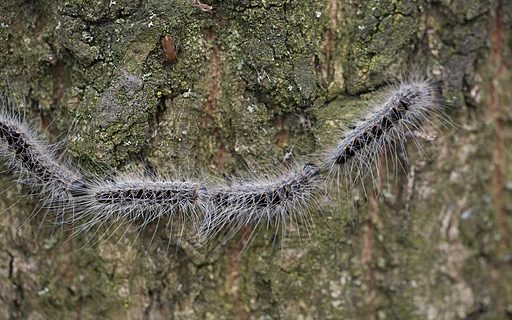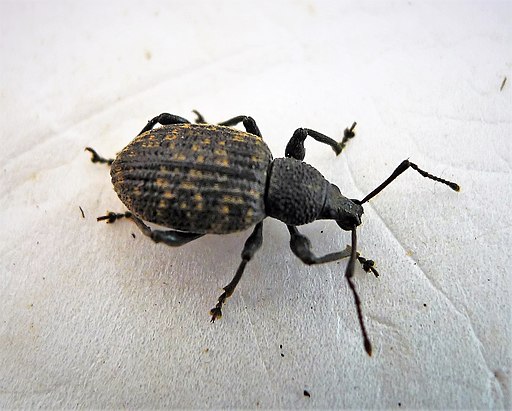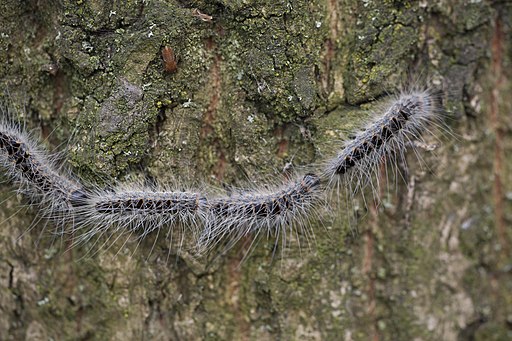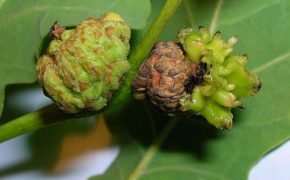
Get a quick no obligation quote It’s free and will only take a jiffy!
Pests and Insects to Look out for on Your Trees This Summer
Your trees are no doubt your pride and joy. You put a great deal of effort into keeping them healthy and looking attractive. So if there is something that threatens them, you’re going to want to know how best to deal with it. One thing that commonly threatens trees is insects, especially during the summer months. With this in mind, here’s what our experts recommend you look out for this summer, and how best to deal with those pesky pests that have the potential to do a whole lot of damage.
Scale Insects
Scale insects have a limpet-shaped shell that’s waxy in appearance. There are more than 25 species in the UK, all varying in shape and colour. They range in size from as small as a millimetre up to 10mm. Examples include Pulvinaria, Diaspis, Parthenolecanium, Unaspis and Coccus species. Eulecanium excrescens can are the largest at up to 10mm. All species feed on tree sap. You won’t see the adults on the move, but the newly-hatched nymphs will crawl over the tree, spreading the infestation as they go.
Signs and symptoms: Many species excrete a sticky substance known as honeydew on the leaves and can leave sooty, black moulds, also on the foliage. Some, such as the Pulvinaria species, lay white eggs under white waxy fibres on the underside of leaves during early summer, but mot lay their eggs under the protection of their shell.
When: All year
Affected trees: Ornamental trees including bay laurel as well as greenhouse and garden fruit trees.
Treatment: There are numerous biological controls including parsitoid wasps and small black ladybirds, and chemical treatments. Deciduous fruit trees and roses can be treated with plant oil winter tree wash on a mild dry day during December to control overwintering scale nymphs. Organic sprays, for example natural pyrethrum, fatty acids or plant oils can give good control of scale insects. Not all scale insect affect the growth of plants and so they do not necessarily require control. Never apply pesticide sprays to tees that are blossoming due to the danger to pollinating insects.
Euonymus Scale Insects
Euonymus scale (Unaspis euonymi) is a very small insect that feeds on tree sap. It gets into the foliage and stems of the tree and can eventually cause serious dieback across various evergreen Euonymus species. It’s become very common throughout England.
Signs and symptoms: Heavily infested trees may experience leaf shedding, mottled yellow leaves and dieback. Some trees will recover, but sadly that’s not always the case.
When: All year
Affected trees: The most vulnerable host plant appears to be Euonymus japonicus. Other evergreen and deciduous spindles can also be affected, however.
Treatment: There are no known non-chemical treatments. Chemical methods such as pesticides are best used when the vulnerable newly hatched nymphs are present in June and early September.
Vine Weevil
The vine weevil is commonly found in UK gardens. The adult weevils eat leaves, whilst the grubs can cause extensive damage by feeding on the roots of trees.
Signs and symptoms: Irregular-shaped notches on leaf margins in summer. Affected plants wilt and eventually die.
When: Adult weevils appear during spring to late summer and grubs from: summer to spring.
Affected trees: Many ornamental trees, fruit trees and shrubs, especially those grown in containers.
Treatment: Various cultural, biological and chemical treatments are known to eliminate the vine weevil. It’s important to put ongoing measures in place once the initial infestation is eradicated as this is a bug that’s known to keep coming back.

Oak Processionary Moth
The caterpillars of the oak processionary moth (OPM) are known pests of oak tree. They are also a health hazard to wildlife and humans. OPM was first introduced to England by accident in 2005, and is subject to a government-led programme of survey and control to minimise its population, spread and impact.
OPM is a tree pest because its caterpillars feed on the leaves of various species of oak trees. Large populations have the ability to strip entire oak trees bare, making them more prone to other pests and diseases and to the likes of drought.
Older caterpillars develop tiny hairs, contact with which can cause itching, skin rash, eye irritation, sore throat and breathing difficulties in humans and animals. The risk of exposure to these hairs is highest in May and June. Because the caterpillars shed hairs when disturbed, the hairs can cause secondary issues where they have adhered to trees, grass and clothing.
OPM is established in the majority of Greater London as well as a few of the surrounding counties including Sussex, Oxfordshire and Bedfordshire. The public is urged to be on its guard to look out for OPM caterpillars, especially during spring and summer, and to report any suspected findings through TreeAlert. The moths need not be reported as they are not a health hazard.
Signs and symptoms: OPM moths are brown and tricky to accurately identify because they look like other species. OPM caterpillars, notable for their very long, white hairs, dark grey bodies and dark heads, have a distinctive habit of moving in late spring and early summer in nose-to-tail processions, sometimes across the ground between oak trees, which is where the name comes from. The processions are often arrow-headed, with a single leader and following rows of numerous caterpillars.
When: Mid to late spring and early summer (May, June, July)
Trees affected: Whilst the only tree that will serve the entire lifecycle of the OPM is the oak tree, other broad leaved trees can also be targeted, including sweet chestnut, hazel, beech, birch and hornbeam.
Treatment: Insecticide spraying and nest removal need to be carefully timed and undertaken by professionals with the right training and equipment. Control measures for the oak processionary moth are outline in more detail in the Forest Research OPM manual.

Professional Help with Tree Care
When it comes to the health of your trees, there is no substitute for expert advice. If you spot any signs of pest infestation amongst your trees, do not waste any time in calling your local tree surgeon for assistance.
Always remember that timely tree pruning is essential. Most trees should not be pruned during their active growing season as they will bleed sap, which is a magnet for pests such as those described in this guide. Always take professional advice when pruning your trees.
At T.H. Tree Services we have been caring for trees for more than 15 years and are well-placed to help you with any pest related issues. For a free consultation and helpful, friendly advice, give us a call on 01268 642814.
Had a fallen tree in the early hours of Monday morning, called for quote and the team had it cleared on the same day. Really good communication when the lads were onsite and did a great job. Lots of pride in their work shown with the thorough clear up. Would thoroughly recommend.
Thank you Stuart for your kind review. We were glad to be able to help you with your fallen tree. If there's anything else you need in the future, please don't hesitate to get in touch.








